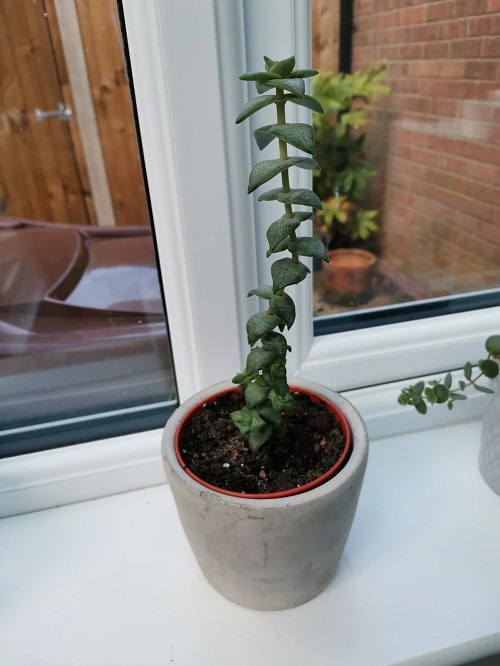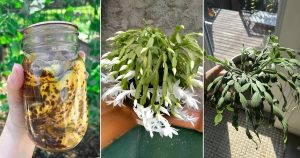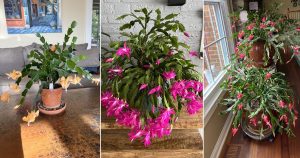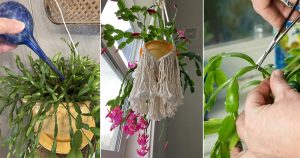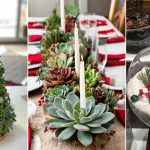How to Grow and Care for String of Buttons, a beginner-friendly, low-maintenance succulent that is perfect for any space!
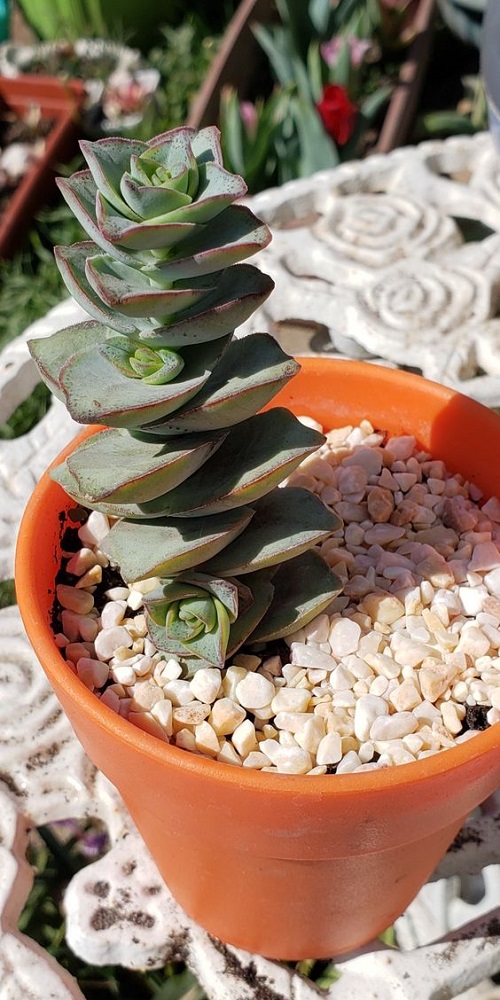
The trailing vines with small, round leaves and stems are easy to maintain with minimal care. Plus, its compact size makes it a must-have addition to your shelves, hanging baskets, or even terrariums.
String of Buttons —Key Facts
| Common Name | String of buttons |
| Scientific Name | Crassula perforata |
| Plant Type | Succulent, perennial |
| USDA Zones | 9-12 |
| Sunlight | Full to partial |
| Watering | Very little, use soak and dry method |
| Soil Type | Well-drained, loamy, sandy |
| Propagation Time | Early spring |
| Humidity Level | Low-moderate |
| Fertilizer | Null |
| Danger of Pests | Exceptionally encounter scale, spider mites, and mealybugs |
String of Buttons Information
The string of buttons, native to South Africa, is a fast-growing succulent with triangular or square-shaped foliage that gives it a stacked look. Its fleshy stems appear pendant-like when fully grown. The short, gray-green leaves are attached opposite to each other in a spiral around the plant’s stem and develop pink edges when exposed to the desired sunlight.
Additionally, during spring, you will see the string of buttons small, pale yellow flowers blooming in your garden, making it look more appealing. However, once flowering is over, it becomes slightly unattractive because of dead and dried flowers or stems. Snip them off to maintain their aesthetic appeal, just but be cautious, as it might cause skin irritation to your pet if consumed.
Fun fact: In its native habitat, the String of Buttons often grows among tall rocks, which gives it natural protection and shade.
String of Buttons Pot Size
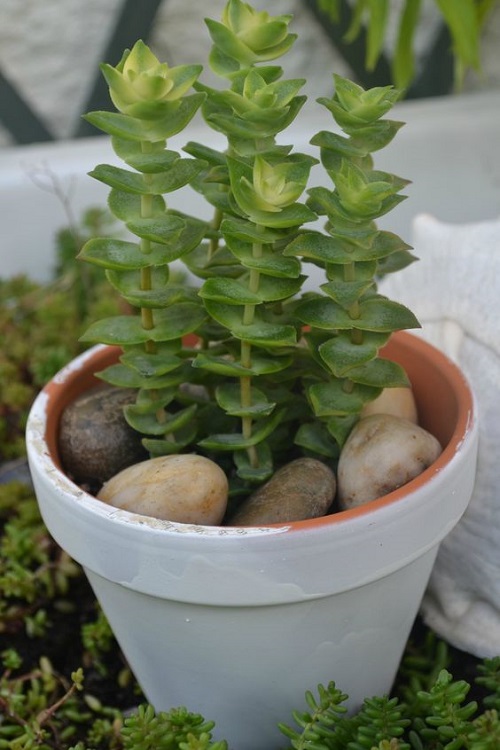
The string of buttons grows relatively small, around 1-2 feet tall and 2-3 feet wide. So, a 10-inch terracotta pot with good drainage holes would be great. Also, if you find the roots dangling out of the pot, then shift it to another one-size bigger pot if necessary!
String of Buttons Propagation
The String of buttons can be propagated with the cuttings of pups or division from the mother plant. Though it could be done by leaves, the possibility of success is low. From pups:
- Look for healthy, green, decent-sized stems with pups and cut them with the help of sharp scissors.
- Remove the bottom leaves and leave the stem for 24 hours to develop callus before planting.
- Meanwhile, prepare the pot with a well-draining succulent potting mix.
- Keep the pot in bright light and place the cutting into the soil; water once a week or usually when the top inch of the soil is dry. You will see root formation after a few weeks. Be patient!
Requirements for Growing String of Buttons
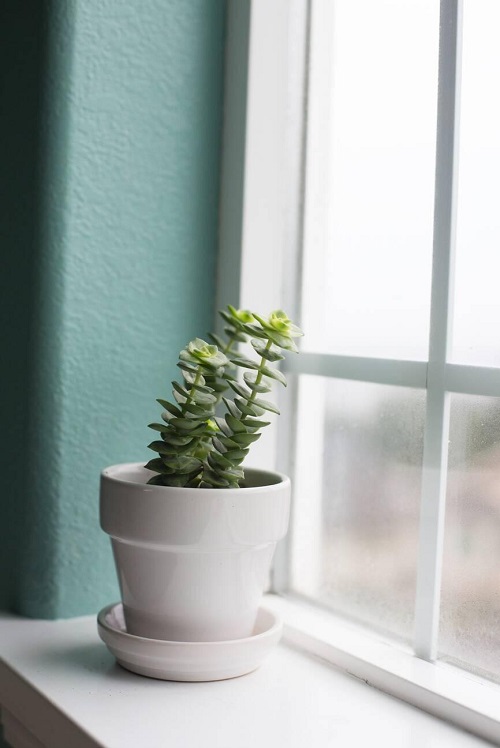
Sunlight
String of buttons can thrive well in full sun and light shade, generally receiving it under the shadow of tall rocks or bushes in its native habitat, South Africa. So, do not worry. It can stay in a place that receives morning sunlight and afternoon shade.
Watering
This plant is known for its drought-tolerant nature, which means you do not have to irrigate it regularly. Only water when the soil feels fully dry to you, not before that. Avoid overwatering as its leaves store water in it; excess irrigation may negatively affect the plant’s health.
Soil
A ready made succulent or cactus mix is great, or you can take a mix of sand, pumice, and bark to mimic its native soil type. The soil pH can be alkaline, acidic, or neutral.
Temperature and Humidity
Protect string of buttons from frost and temperature dropping below 32°F. Give it proper air circulation and avoid high humidity; medium to low humidity is fine for thriving well!
String of Buttons Care
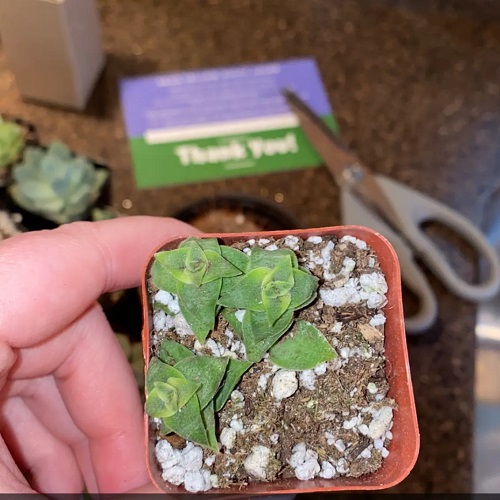
Fertilizer
Crassula perforata can grow abundantly in poor, infertile soil without needing nutrient-rich soil. Still, if you want to feed it to boost its growth, then once a month during the growing season, using houseplant fertilizer half the prescribed strength would be fine! Avoid excess!
Pruning
When you find it growing out of shape or any old, damaged, weakened stems, then you can take the lead to bring it back to the desired form anytime in the year. Do it with the help of sterile gardening scissors. This will also encourage the new growth, but do not overdo it!
Pests and Diseases
It’s free from danger, but overwatering may welcome some pests like scale, spider mites, and mealybugs (manual removing or pesticides), which can be eliminated with neem oil solution or spray.
Common Issues With Crassula perforata
Although Crassula perforata isn’t susceptible to issues, it is quite easy to maintain. However, sometimes, while taking care of it, you may encounter yellowing or browning of leaves. This generally happens when the string of buttons is exposed to too much sunlight. They are the signs of sunburn. Adjust the location!
Secondly, if your leaves are showing a mushy appearance, then it is an indication of over-irrigation. Let the plant fully dry out before watering.
Furthermore, the shriveling of leaves is due to underwatering, which means the leaves are not carrying or storing water. Irrigate them immediately and restore the fleshy leaves.
So you have got all the ideas about growing String of Buttons. Do try it and we’d love to hear your stories, tips, and even your plant mishaps in the comments below!

